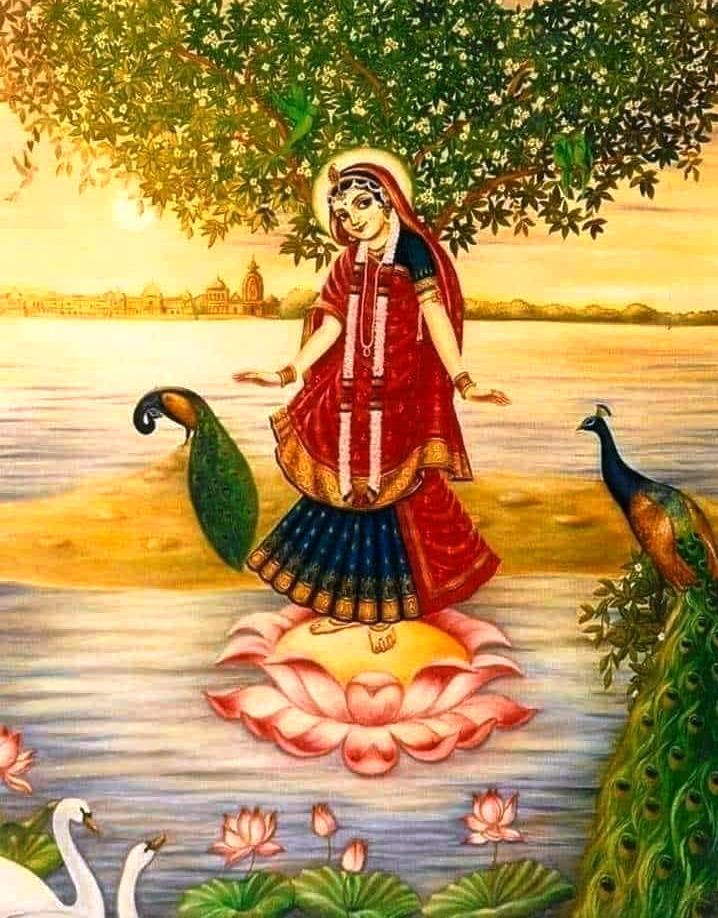
The Vaishnavas celebrate today the birth of the Goddess Radha on its traditional fixed date of the eighth in the bright fortnight of Bhadrapada month, fifteen days after the celebration of the birth of Lord Krishna, as the child of Vrishabhanu and Kirtida, the royals of Barsana (derived from Sanskrit Vrishabhanupura).

The circumstances of Radha’s life are not directly recorded in Shrimad Bhagavatam and Vishnu Purana, the two most sacred Vaishnava Puranas. The Padma Purana says that she appeared from the sacrificial ground and was adopted by the royal couple. The Narada Purana speaks of her conception by Vrishabhanu and Kalavati, members of one of the wealthy cowherd communities of Gokula. The Adi Purana tells us that being the eternal consort of Vishnu, she incarnated 15 days less a year before Vishnu appeared as Krishna, in the morning hours of the bright ashtami of the Bhadrapada. The Brahma Vaivarta Purana says Radha appeared as the Vamanga (split left half) of Krishna himself, the two being the timeless beloved couple in the Cosmic realms of Goloka. These accounts outline some of the traditional beliefs about the birth of Radha.
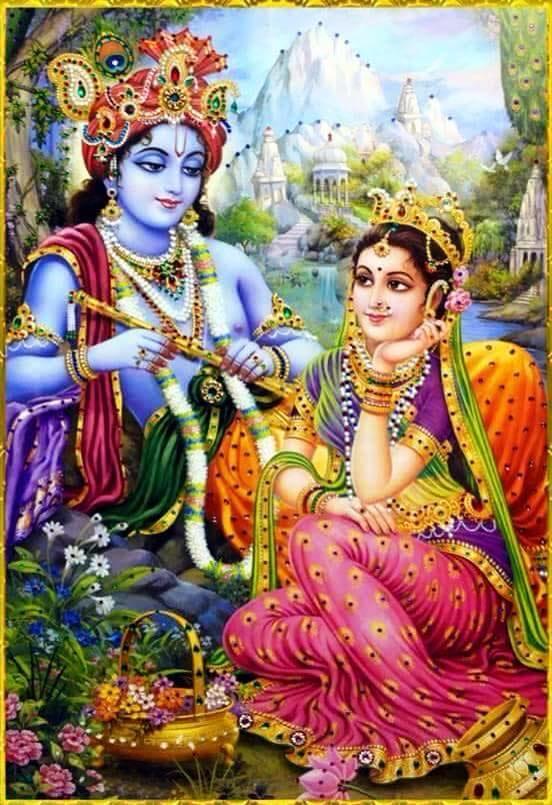
Many historians believe that Radha first appeared in the “Gita Govinda”, which was written by Jayadeva in the 12th century and then adopted in mythology. Some however, find the emergence of Radha as early as in the 7th century writings of Hala, Bharata Narayana, Valpati, Ananda Vardhana , etc. On the other hand, Narada Pancharatra, a fourth century treatise on Vaishnava tradition, contains a book called Gyanamrita Sagara that speaks of the devotion of Radha and Krishna.

Jayadeva poet is recording episodes of passionate love between Shri and Krishna in this poetic work
Whatever be the intellectual discourse on the ‘evolution of Radha’, the Hindus believe that Radha was born as a milkmaid in Barsana. Krishna fell in love with her. She attained the status of the Goddess Supreme through her unbounded and divine love for Krishna. The love stories of Radha and Krishna set a trend in the Bhakti tradition- ‘Radha-Krishna upasana’ in which the name of Radha always precedes the name of Krishna. The Brahma Vaivarta Purana goes on to reveal the glory of chanting the name of Radha, रा शब्दोच्चारणात् भक्तः मुक्ति सुदुर्लभाम्। धा शब्दोच्चारणात् दुर्गे धावत्येव हरे पदम्।।, which means by chanting the name of Radha one may attain salvation or proximity to Shri Krishna in his Supreme abode.
The love story of Radha and Krishna is recognized as perennial and divine in the Sanatana Vedic Dharma. Radha is the presiding deity, along the Krishna, in the traditions of the Nimbarka sect, Vallabha sect, and Sakhi sect as also in the Gaudiya sect of Vaishnavas. Chaitanya Mahaprabhu believed in an androgynous union of immortal love between Radha and Krishna to such an extent that he internalized Radha within his conscious self. For the laity, Radha Rani is the majestic queen of Vrindavana. Radhe-Radhe is one popular form of salutation which they use as remembrances to her.
Ved-Madhuri takes you through a photo-gallery of Barsana, where crowds have assembled in large numbers since yesterday to celebrate the birthday of Radha Rani. People climb up to reach the temple of Ladali Ji Maharaj (the Beloved Empress), which is situated atop Brahma-hill, and patiently wait for their turn to have her darshana. Her idol (called archana-vigraha) was offered ritualistic ablutions with five sacred liquids- milk, curd, clarified butter, honey and scented water (called panchamrita abhishekam) this morning. Please watch with us the celebrations:


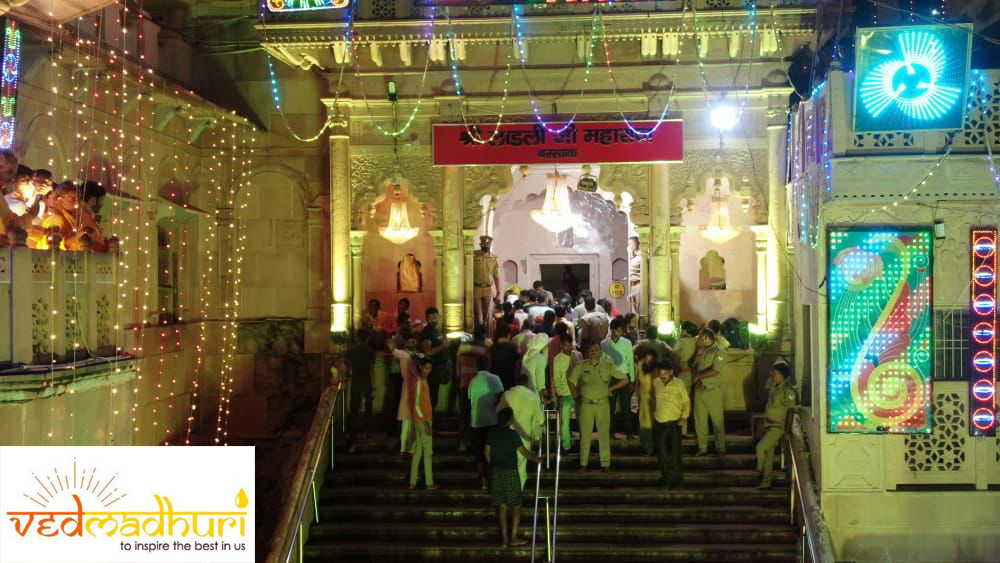
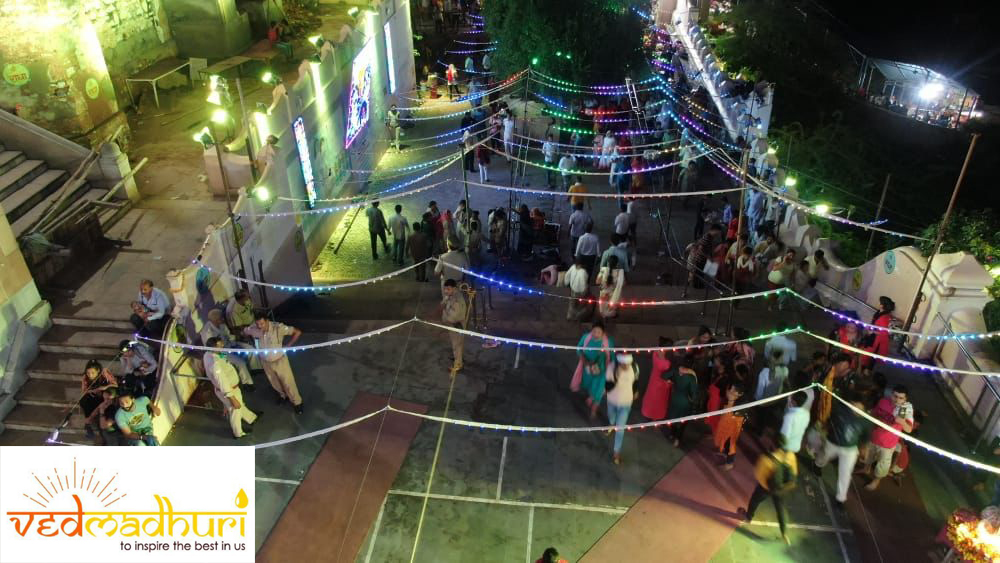



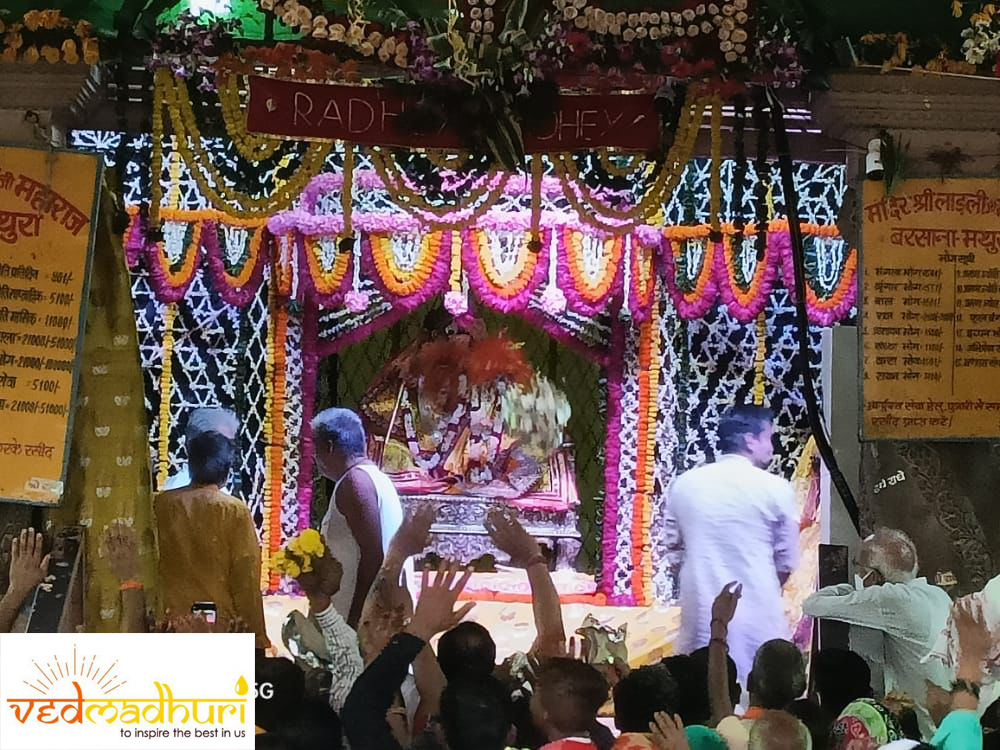
Jai Shri Radhe, Jai Shri Krishna

